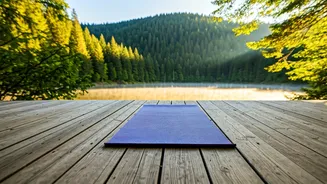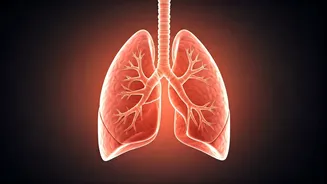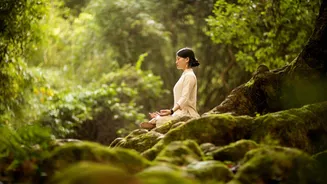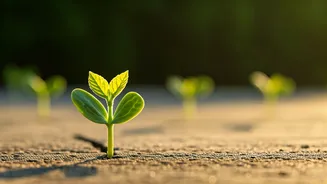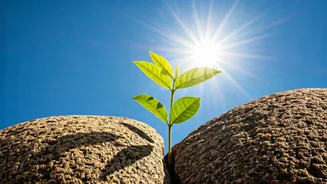Introduction to Yoga
Yoga, an ancient practice, is gaining popularity for its many benefits. For children, it's not just about exercise; it's a holistic approach to well-being.
Yoga improves physical strength, and flexibility, and cultivates mental clarity. Yoga helps children learn to manage stress and anxiety. It also supports better sleep and enhances self-esteem. The following asanas are specifically chosen for their ability to improve cognitive functions such as memory and concentration. Regular practice can significantly improve a child’s ability to focus, making it easier to learn and retain information.
Mountain Pose (Tadasana)
Tadasana, or Mountain Pose, is the foundation of all standing poses. It may seem simple, but it teaches children about balance and posture. To perform this pose, children should stand tall with their feet together, arms at their sides, and palms facing forward. They should engage their core and imagine a string pulling them upwards from the crown of their head. This pose enhances body awareness and stability. It helps children develop a sense of grounding and presence. By holding this pose, children learn to focus their attention, preparing them for more complex asanas.
Tree Pose (Vrikshasana)
Vrikshasana, or Tree Pose, is excellent for improving balance and concentration. Children begin by standing in Mountain Pose. They then bring one foot to the inner thigh of the standing leg, either above or below the knee. The hands can be brought to a prayer position in front of the chest, or raised overhead like branches of a tree. This pose requires children to focus their gaze on a fixed point. This helps develop mental focus. Regular practice strengthens the muscles and promotes a sense of calm and stability, enhancing their ability to concentrate.
Warrior Pose (Virabhadrasana)
Virabhadrasana, or Warrior Pose, comes in several variations, all designed to build strength and confidence. Start with the basic stance: step one foot forward, bend the front knee to a 90-degree angle, and extend arms out to the sides. This pose is not only physically engaging but also mentally empowering. It demands focus and determination. It strengthens legs and core muscles while fostering a sense of inner strength. Practicing this pose encourages children to overcome challenges with courage and concentration.
Triangle Pose (Trikonasana)
Trikonasana, or Triangle Pose, stretches the sides of the body and improves balance. Children should stand with their feet wide apart, turn one foot out, and bend to the side, reaching the hand towards the foot while the other arm stretches up. This pose enhances body awareness. It stimulates the brain, which improves focus. The coordinated movements involved help children develop a sense of coordination and balance. With consistent practice, children's concentration skills are enhanced.
Downward Dog (Adho Mukha Svanasana)
Adho Mukha Svanasana, or Downward-Facing Dog, is a rejuvenating pose that strengthens the entire body. Children begin on their hands and knees, then lift their hips up and back, forming an inverted V-shape. This pose increases blood flow to the brain, which improves mental clarity. It is both invigorating and calming. This pose can also help reduce stress and improve concentration. Children often find it a fun and accessible pose to practice, which motivates them to be consistent with their practice.
Cobra Pose (Bhujangasana)
Bhujangasana, or Cobra Pose, stretches the spine and opens the chest, promoting better breathing. Children lie on their stomachs, place their hands under their shoulders, and lift their upper bodies off the ground. This pose improves posture, which can indirectly enhance concentration. The stretching helps release tension and improve blood circulation. Cobra Pose stimulates the mind and body, making it easier for children to focus and stay alert. It also builds confidence and helps children feel more connected to their bodies.
Child's Pose (Balasana)
Balasana, or Child's Pose, is a resting pose that calms the mind and body. Children kneel, bring their forehead to the floor, and stretch their arms forward. It allows children to relax and de-stress. Child’s Pose helps children center themselves and quiet their minds, making them more receptive to learning. This pose provides a sanctuary of peace, making it a good practice after more active poses. Practicing Child's Pose regularly can improve focus.
Bridge Pose (Setu Bandhasana)
Setu Bandhasana, or Bridge Pose, strengthens the back and improves circulation. Children lie on their backs, bend their knees, and lift their hips off the ground, keeping their feet flat on the floor. It stimulates the mind and helps improve memory. This pose helps to alleviate stress and calm the brain, which enhances concentration. It also strengthens core muscles, increasing overall physical and mental well-being. Practicing this pose helps improve their ability to focus on tasks.
Corpse Pose (Savasana)
Savasana, or Corpse Pose, is the final pose where children lie still on their backs, allowing the body and mind to relax. This pose is vital for integrating all the benefits of the other asanas. It promotes deep relaxation, reducing stress and enhancing focus. Practicing Savasana helps children cultivate mindfulness. It encourages them to be fully present and improve their ability to concentrate. This pose provides the foundation for better memory power and concentration.


